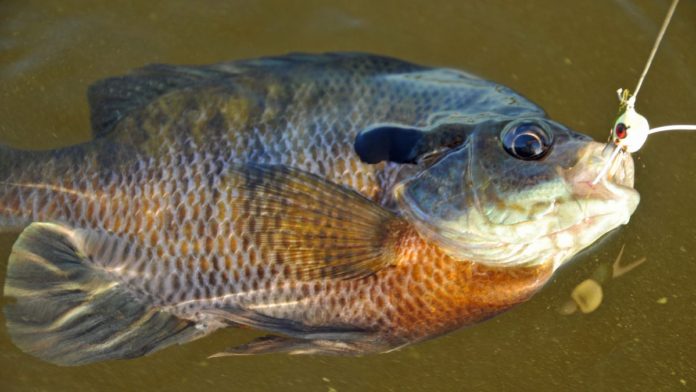I was recently asked by a pilot what fishing lures and other items would be ideal to include in a backpack survival kit. Some thought was given before writing this important column that could save someone’s life.
Lures are designed to imitate live bait. My first tip for a survival kit is think small for two reasons; you can pack more lures in a plastic box and will likely catch more fish.
Several of the smaller lures mentioned in this article will occasionally catch bigger fish, but in a survival situation, easily caught smaller fish can mean more meals. Here are my choices for a fishing survival kit:
• Small bobbers, an assortment of hooks, including straight-shanked and treble in both bronze and gold plated, swivels and split shot weights in case you can find live bait. Small minnows, worms or insects are excellent choices. Small versions of this bait-fishing kit are available on the internet in handy metal boxes, but it is less expensive to create your own version. You, too, can buy fish hook cards that fit in your billfold.
• Bait: Jars or packages of preserved euro larva and other insects or worms are available that will fit in your kit. These don’t require refrigeration.
• Al’s Gold Fish spoons for two reasons: These plated fishing spoons have amazing flash in the water that attracts fish and they are small. You can put a dozen in a small compartment. They come in gold, silver and other colors, including an effective blue.
• Plastic worms from six inches down to tiny are effective because most fish eat worms. Black, purple or red are my favorite colors because of past successful fishing trips. Hooks to match the worm size are required, especially for Texas rigging or sticking the hook just under the head and reattaching it in the worm body, making it weedless.
• Crappie jigs from 1/32-ounce to 1/100-ounce are good minnow imitations. Roadrunner jigs are my first choice because of the spinner on their collar that attracts fish. 1/32-ounce or smaller feathered crappie jigs or rubber versions are productive and several will fit in a small container. Include yellow, white and black jigs.
• Rapala or Rebel balsa minnows, floating versions, are excellent for most fish. They have a very tight wobble on the retrieve and float so you can twitch, pause, twitch, pause to attract fish. I prefer the silver or gold with blue or black back. Again, the smaller versions are extremely effective and you can fit several in a reasonably small space.
• Inline spinners are very good baitfish imitators. I especially prefer a No. 2 sized Mepps with gold blade and brown bucktail. Roostertails and the old fashion Shyster Spinners are good. This type of spinner is best fished with a constant retrieve.
• Ice fishing jigs: Those stranded on ice-covered landscapes would do well by including some ice fishing jigs. They are small and generally excellent minnow imitations. There are many different types of ice fishing jigs to choose from. I prefer the lighter colors.
• Flies: Dry flies float and are my main choice. Chances are most of you would not have a fly rod in an emergency situation, but these flies can be positioned behind a small bobber. Rubber spiders are excellent for panfish. They float and can be twitched as an attracting lure. Wet flies sink and may be effective under a small bobber. There are hundreds of different fishing flies, so find what you think would work.
• Portable telescopic fishing rods and reels: Check the internet for a listing of rods and reels that will fold down to almost nothing. They are lightweight and small. The better kits will last longer and help you survive.
There, too, are reels called Yo-Yos. They resemble a spool that holds line and actually are spring loaded to set the hook in fish. Check the internet for these unique space-saving items.
• Additions: I would recommend lighters or waterproof matches in air-tight containers, a sharp knife, fingernail clippers, a small flashlight with extra batteries in an air-tight container, tweezers, needles and thread and a small first-aid kit. Hemostats come in handy for removing deeply hooked fish and weigh less than pliers. When possible include a roll of duct tape. Remember a small compass, often the difference between walking out of a bad situation or walking deeper into the wilderness and possibly your demise.
• Extra line: Monofilament line in a 4- to 6-pound weight for rewinding your reel could come in useful when stranded for long periods. Heavy monofilament from 20-30-pound test and heavier can be used for fishing or other usages.
• Carrying fish: A nylon stringer is lightweight and portable, easily folding up. This stout cord can be used for other purposes.
• Paracord: This is useful for building a shelter or any other imaginable need. You can shred the cord and use strips for fishing line when monofilament is not available.
• Portable help: The Wilderness Survival Card is a set of tools and devices that fit in a billfold or pocket! Specifications: Card Size: 2 x 3.5 inches, weight: 12 grams, 0.42 ounces. Features: fish hooks, arrow heads, snare locks, sewing needles, saw blades and tweezers. You can find several versions of this item on the internet.
• Bag it: Backpacks, fanny packs or other bags with body-attaching straps are useful for moving long distances or walking out of the wilderness. Make sure all equipment is light enough to be carried many miles.
Hopefully you will never need this list.
Kenneth Kieser, a veteran outdoors writer and member of the Waterfowlers Hall of Fame and National Fresh Water Fishing Hall of Fame, writes a weekly outdoors column for The Examiner. Reach him at kieserkenneth@gmail.com.
Credit: Source link






























